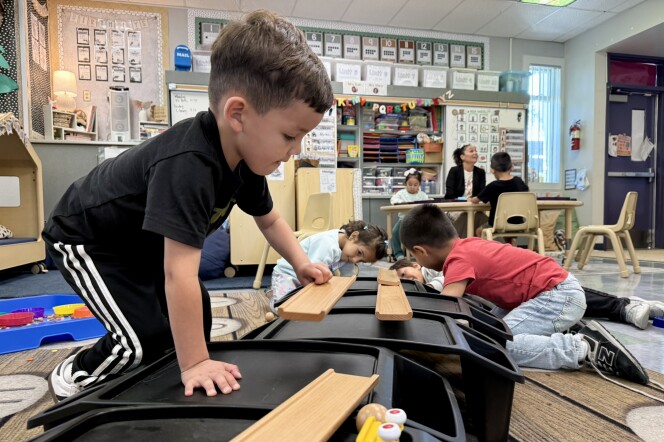With our free press under threat and federal funding for public media gone, your support matters more than ever. Help keep the LAist newsroom strong, become a monthly member or increase your support today.
Ecologists in England are building rope bridges for dormice, its native rodents
AYESHA RASCOE, HOST:
High in the treetops of the forest of Dean in Gloucestershire, England, hazel dormice will soon have a new way of getting around - rope bridges. Dormice are tiny rodents native to England, and once they emerge from their winter hibernation, they'll find new 65-foot-long bridges to help them travel around their woodland home. Kate Wollen, an area ecologist for Forestry England, is here to tell us more. Welcome to the show.
KATE WOLLEN: Well, thank you very much for having me.
RASCOE: So why don't we start with describing dormice? A lot of folks probably are not familiar with them.
WOLLEN: When you say rodent, people think, oh, no, mice, rats. But these are just gorgeous rodents. They're very small. They would sit happily in a small palm of someone's hand. The average adult weighs only 15 to 20 grams. The body is gingery, hairy body, and the tail is not quite as long as their body. And the cutest thing is, when they go to sleep, they curl this tail over their head, and they just sort of go into this gorgeous little ball.
RASCOE: I Googled them for this story. I was skeptical. I was skeptical. But they are really cute. I have to say this (laughter). And that takes a lot for me to say it. They're very cute. So why do dormice need rope bridges?
WOLLEN: Well, dormice - they're in arboreal creature, which means that they live in the treetop. So the whole time when they're awake, which is in the spring and summer, they don't like to come to ground. It's not where they're comfortable. We had to put these rope bridges in because unfortunately, some of our woodland trees in the U.K. have got a disease. It's called ash dieback, and it affects ash trees. So we had to sadly fell a lot of these trees, which meant we had big gaps in the canopy, tree cover, and the dormice wouldn't feel comfortable coming down to ground to cross these big open spaces to get from one part of the woodland to the other.
RASCOE: So is the dormice population endangered? Do they have to do this sort of crossing to the other places? Is that a part of their survival?
WOLLEN: Yes. So they haven't got a very big territory at all. But in order for, say, the young of the year to spread to another part of the woodland, they need to use a whole woodland block. And they also need a variety of foods, so they might get food in spring in one part of the woodland, and they might want to go to the other part of the woodland to get their food from there. If there's better, say, hazelnuts, which they love, in the autumn. And they are endangered, sadly, in the U.K. They're considered to be vulnerable and at risk of extinction. They have already gone extinct from some of the northern counties of the U.K. But luckily in Gloucestershire we have a good population. We have a healthy population. And we want to keep it that way.
RASCOE: How did the idea of rope bridges come about? Like, is this a new concept?
WOLLEN: The idea came about really because when we had to fell these trees, myself and a couple of friends were chatting and saying, what could we do to help these dormice? And we thought, well, there are things called wildlife bridges, which across the world people have used these bridges, but they're usually quite a substantial affair. So we sort of did a bit of research, and we found things like possum bridges in Australia. And so we thought, well, what could we use that isn't going to cost a lot of money? So we thought, well, we'll use rope and fine mesh.
RASCOE: Are these bridges going to help other animals in the forest?
WOLLEN: Yes, I think so. We're hoping to get some wildlife cameras up on these bridges. With these cameras, we want to see what animals do use these bridges. Then we can see how successful they are.
RASCOE: That's Kate Wollen, area ecologist for Forestry England. Thanks for being with us.
WOLLEN: Well, thank you very much. Transcript provided by NPR, Copyright NPR.








